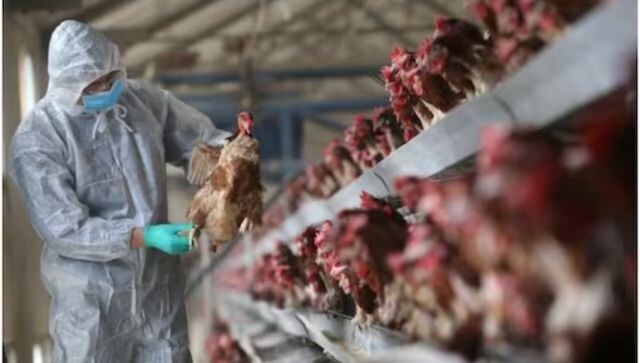China bank loans hit record high in January after stimulus
Banks extended 4.92 trillion yuan ($683.7 billion) in new yuan loans in January, hitting a record high, up sharply from December and beating analysts' expectations, data from the People's Bank of China (PBOC) showed on Friday.

Image- Reuters
Credit growth in China reached a historic high in January, indicating a resurgence in demand for financing following government interventions to bolster the economy.
The surge in loans is partly attributed to seasonal trends, as banks typically increase lending at the beginning of the year when they have ample loan quotas available. Additionally, stimulus initiatives implemented by President Xi Jinping’s administration have likely contributed to the rise in credit, aiming to stabilize the economy and address the significant downturn in the $7 trillion stock market.
Policymakers in China have committed to rolling out further measures to bolster the recovery of the world’s second-largest economy, which has been weaker than anticipated following the COVID-19 pandemic. This effort comes against the backdrop of a significant property crisis and a prolonged downturn in the stock market.
Related Articles
Chinese financial institutions typically prioritise granting loans at the start of the year to attract high-quality customers and gain a larger share of the market.
Banks extended 4.92 trillion yuan ($683.7 billion) in new yuan loans in January, hitting a record high, up sharply from December and beating analysts’ expectations, data from the People’s Bank of China (PBOC) showed on Friday.
January lending more than quadrupled from December’s 1.17 trillion and exceeded the previous record of 4.9 trillion yuan in the same month a year earlier.
Analysts polled by Reuters had predicted new yuan loans would rise to 4.50 trillion yuan in January. “January bank lending is stronger than expected, which will support the real economy,” said Luo Yunfeng, an economist at Huajin Securities.
“Going forward, monetary policy is likely to be loosened marginally,” Luo said.
Chinese banks doled out a record 22.75 trillion yuan in new loans last year, up 6.8% from 2022. But loan growth year-on-year fell to its lowest in more than 20 years in December as the weak economic outlook left consumers and companies in no mood to take on more debt.
China’s economy opens new tab grew 5.2% in 2023, meeting the official target, but the recovery was far shakier than many analysts and investors expected, with a deepening property crisis, mounting deflationary risks and tepid demand casting a pall over the outlook for this year.
The central bank said on Thursday it would keep policy flexible and precise to spur domestic demand, while maintaining price stability, amid signs of a patchy economic recovery and persistent deflationary risks.
“In light of deepened deflation and downbeat sentiment, we continue to expect two more policy rate cuts and two more RRR cuts through the remainder of this year,” analysts at Goldman Sachs said in a note.
To prop up faltering growth, the PBOC cut the reserve requirement ratio (RRR) for banks by 50-basis points on Feb. 5, the biggest in two years, releasing 1 trillion yuan in long-term liquidity.
MORTGAGE LENDING UP SHARPLY
Household loans, mostly mortgages, climbed to 980.1 billion yuan in January from 222.1 billion yuan in December, while corporate loans jumped to 3.86 trillion yuan from 891.6 billion yuan.
Broad M2 money supply in January grew at a slower pace of 8.7% from a year earlier, the data showed, the lowest since November 2021 and below a forecast 9.3% in the Reuters poll. It rose 9.7% in December.
Outstanding yuan loan growth also slowed to 10.4% from a year earlier compared with 10.6% growth in December. Analysts had expected 10.4% growth, a more than 20-year low.
Annual growth of outstanding total social financing (TSF), a broad measure of credit and liquidity in the economy, stood at 9.5% in January, the same as in December.
The central bank has said this year’s growth of TSF and money supply would match expected goals on economic growth and inflation.
The finance ministry has pledged to maintain fiscal expansion this year to spur recovery, suggesting public spending will be the government’s main tool to lift growth.
Any acceleration in government bond issuance could help boost TSF, which includes off-balance sheet forms of financing that exist outside the conventional bank lending system.
China has issued 2.62 trillion yuan in 2024 advance quotas for local government special bonds to fund key investment projects, a finance ministry official said earlier this month.
Local governments issued a net 3.96 trillion yuan in special bonds in 2023, exceeding the annual quota, official data showed.
In January, TSF rose to 6.5 trillion yuan from 1.94 trillion yuan in December. Analysts polled by Reuters had expected January TSF of 5.55 trillion yuan.
Join our Whatsapp channel to get the latest global news updates
also read

Taiwan holds military drills after China repeats threats, vows to defend against invasion
Taiwan's military was concluding a two-day exercise at sea and in the air on Wednesday to practice defending against such a surprise attack. Journalists observed the training from fast boats that escorted a mine-laying ship.

China reports death of woman from combined H3N2, H10N5 strains of bird flu
The 63-year-old woman from Anhui province had underlying health conditions and developed cough, sore throat, fever and other symptoms on November 30 and died on December 16.

Threat posed by China offers opportunity for strong India-US ties, says Congressman Issa
The Congressman observed how the Indian and the US societies “share many of the same values, but approach the work ethic and the education ethic in a substantially different way” in which the shortages in the US are disproportionately able to be filled in partnership with India.


